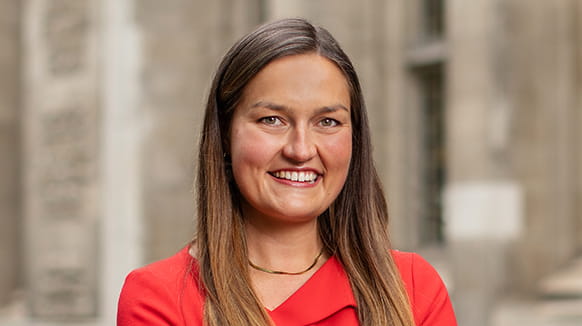The English Court of Appeal (COA) in Re Petrofac Limited & Petrofac International (UAE) LLC [2025] EWCA Civ 821 ruled on one of the most significant restructuring rulings since Virgin Active and Thames Water. Petrofac, an oilfield services group, proposed two interconnected restructuring plans in December 2024 under Part 26A of the Companies Act 2006 (Part 26A) to tackle more than US$1.1 billion of secured debt and raise approximately US$300-350 million in new financing. The High Court had sanctioned the Part 26A plans in May 2025, despite objections from certain joint venture (JV) partners, who argued that the proposals were unfairly prejudicial. Following an appeal by the JV partners, the COA overturned the sanction in July 2025. The COA held that while the JV partners could not rely on indirect competitive benefits under the “no worse off” test, the allocation of new money and equity upside had not been shown to be fair given the absence of proper market testing or evidence. For JV partners, shipping contractors, financiers and other stakeholders, Petrofac represents a recalibration of the fairness analysis underpinning the English restructuring plan regime, which has already had an impact on other restructuring rulings — including one in the oil and gas sector — but time will tell how restructuring plans are defined by future court rulings and governance.
The “No Worse Off” Test: Rights vs. Interests
The JV partners’ appeal in Petrofac was advanced on two grounds. The first concerned the statutory “no worse off” test, which requires all creditors to be in no worse a position under the restructuring plan than they would have been in the “relevant alternative,” which is the most likely outcome if the plan were not sanctioned. The “relevant alternative” to the plan in Petrofac was agreed to be a group-wide liquidation. The JV partners argued they would be better off in that scenario, as Petrofac’s collapse would remove a competitor from the market. They contended that this indirect economic benefit should have been considered by the first instance court.
The COA rejected this argument and drew a sharp distinction between:
- Rights: what creditors are legally entitled to (for example, their claim in liquidation); and
- Interests: broader commercial advantages, such as market share if a competitor fails.
For the purposes of the “no worse off” test, only creditors’ rights are relevant, however financially significant their wider interests may be. This distinction is particularly important in this industry, where JV partners, contractors and counterparties often double as competitors. The Petrofac decision currently makes clear that English restructuring law protects creditors in their capacity as creditors, not as market rivals.
New Money and the Search for Fairness
The JV partners succeeded on their second ground of appeal, which concerned the treatment of new money. Under Petrofac’s plans, new financing participants would have received over two-thirds of the restructured equity (valued at around US$1 billion), with projected returns of 211–267 percent.
The COA distinguished between new money provided at market rates, which is a legitimate cost of restructuring, and above-market returns, which constitute a restructuring benefit that must be shared fairly among creditors. The COA confirmed that there was no assumption of fairness with the burden lying on Petrofac to demonstrate it. However, Petrofac had failed to do so. There had been no meaningful market testing, no fairness opinion and no persuasive evidence that the terms reflected genuine risk. The COA was unpersuaded that the returns were justified and accordingly overturned the sanction.
For distressed shipping and energy projects — LNG facilities, offshore rigs and fleet finance syndicates — new money injections are often critical. Petrofac raises the bar of fairness making it clear that excessive equity giveaways or preferential terms for financiers will likely not withstand judicial scrutiny unless supported by clear expert financial evidence.
Wider Market Implications and Lessons Learned
The COA’s reasoning in Petrofac does more than refine the technical boundaries of the “no worse off” test and new money fairness. It reshapes the restructuring landscape in several important respects, which are summarised below, but there are numerous restructuring plans currently before the courts and it is anticipated that we will see additional case management by the judiciary in the forthcoming update to the official court practice statement[1], which is due to be published in early September 2025 following a public consultation that closed in June 2025. Financially distressed small and medium-sized enterprises (SMEs) will also be taking advice on the recent innovative and ground-breaking case of DSTBTD Limited, the first example of the High Court sanctioning a restructuring plan for a small company.
A: Categories of Plans – Broader Scope for Unsecured Creditors
The COA drew on the categorisation of restructuring plans first set out in Thames Water: (i) Adler-style solvent wind-downs, involving orderly asset disposals rather than dead in the water and piecemeal liquidation; (ii) Virgin Active-style balance sheet restructurings, such as debt-for-equity swaps to allow a business to continue as a going concern; and (iii) Thames Water-style bridge plans, designed to buy time before a fuller restructuring. Historically, only bridge-style plans were thought to create entitlements for out-of-the-money creditors. Petrofac confirms this is too narrow and that even in balance sheet restructurings or wind-downs, unsecured creditors may have a valid claim to a share of restructuring benefits. This will no doubt be a future battle ground in this often costly, heavy-weight litigation, hopefully now within the financial means of SMEs.
B: The End of Virgin Active Deference
In Virgin Active, landlords were denied access to new money on the basis that they were “out of the money.” Petrofac overturned that presumption, emphasising that the burden lies on the plan company to prove fairness with evidence. Assertions will no longer suffice. Companies must now run genuine market processes for new capital, invite bids, document alternatives and secure independent fairness opinions. This will increase costs but will provide protection against challenge.
C: Fairness Beyond Equal Opportunities
Petrofac also makes it clear that simply offering all creditors the opportunity to participate in new money is not sufficient if the terms are excessive. Equal opportunity alone does not cure unfairness. This prevents debtor companies from offering participation in overpriced financings as a way of insulating themselves from challenge.
D: Secured Creditor Dominance is Being Challenged
Traditionally, the support of senior secured creditors was decisive. Petrofac has changed that balance somewhat, warning against over-reliance on secured creditor approval particularly where fees or incentives are involved. Sponsors and secured lenders can no longer assume that their consent guarantees sanction. The court will now look behind creditor support to assess whether the outcome is genuinely fair.
Case Application: Madagascar Oil
On 15 August 2025, in Re Madagascar Oil Ltd [2025] EWHC 2129 (Ch), the High Court sanctioned the Madagascar Oil restructuring plan — the first detailed decision post-Petrofac. The court reaffirmed the importance of the “no worse off” test and fair allocation of value, but emphasised that it will focus on the grounds actually raised by objecting creditors.
Although the plan involved significant new money provided by shareholder BMK, no creditor challenged the financing terms. As a result, the court did not require expert market testing evidence, despite the higher evidential bar set by Petrofac. The judgment also highlighted the importance of international enforceability, stressing the need for recognition in Mauritius and Madagascar before sanction could be granted. For cross-border industries such as shipping and energy, this underlines that international effectiveness is now a central feature of plan design, as was also the case in the McDermott restructuring plan, Re CB&I UK Ltd [2024] EWHC 398 (Ch)).
Case Application: Waldorf Production
Just days later after Madagascar, the High Court refused to sanction Waldorf Production’s restructuring plan, Re Waldorf Production UK plc [2025] EWHC 2181 (Ch), — a clear demonstration of Petrofac in action. Although the plan satisfied the “no worse off” jurisdictional test, it failed on fairness grounds. This is a common and essential factor to ensure restructuring plans treat creditors fairly.
Unsecured creditors HMRC and Capricorn Energy were offered only 5 percent of their claims and a conditional future return tied to company performance, while bondholders preserved much of their position. The court found this allocation arbitrary and unjust, particularly given the unsecured creditors’ role in enabling a solvent outcome.
The judgment illustrates the way Petrofac’s principles are now being applied: fairness is not secondary to jurisdiction; companies must produce credible evidence to justify allocations; out-of-the-money creditors must be heard where benefits are unevenly shared; and the absence of meaningful engagement with dissenting creditors can itself undermine fairness. Most significantly, the court signalled a judicial shift: where deliverability and secured creditor support once carried decisive weight, the court is now willing to refuse sanction if fairness is lacking, even at the risk of insolvency.
Practical Implications for Shipping & Energy Restructurings
The combined lessons of Petrofac, Madagascar Oil and Waldorf Production are already reshaping restructuring practice at a fast pace. Companies must now anticipate a significantly heavier evidential burden, including robust valuations, fairness opinions and credible market testing. Timetables will lengthen, costs will rise and early creditor engagement is essential.
For borrowers and sponsors, the message is to begin restructuring discussions early, structure timetables realistically and allow time to gather expert evidence. For lenders and new money investors, returns must be justified with market comparables, as reliance on secured creditor support alone will not be sufficient. For unsecured creditors — such as shipyards, contractors, suppliers and JV partners — the recent decisions confirm that objections can be decisive, even where creditors appear to be out of the money.
In shipping and energy restructurings, where projects are typically cross-border, capital-intensive and exposed to commodity price volatility, transparent allocation of value and proactive creditor engagement will now be critical to success.
Conclusion: A New Era of Fairness
Petrofac has raised the bar for fairness and evidence in restructuring plans. Madagascar Oil demonstrates that the courts remain pragmatic in sanctioning plans that are reasonably structured (and uncontested, in that case), while Waldorf Production shows a new willingness to strike down plans that fail on fairness, even where insolvency may result. For shipping and energy players, the combined message is clear: prepare early, evidence your terms rigorously, get expert valuation advice and never assume creditor voices can be ignored. Fairness is no longer a procedural gloss — it is the decisive factor.
Haynes Boone has been at the forefront of developments in restructuring plans in recent years and advised stakeholders on both the McDermott and Waldorf Production restructuring plans, in addition to the McDermott Chapter 15 proceedings in the U.S. These mandates reflect the firm’s depth of experience across complex, cross-border restructurings in the shipping, energy and wider capital-intensive sectors.
[1] The Practice Statement (Companies: Schemes of Arrangement under Part 26 and Restructuring Plans Part 26A of the Companies Act 2006) dated 26 June 2020.

